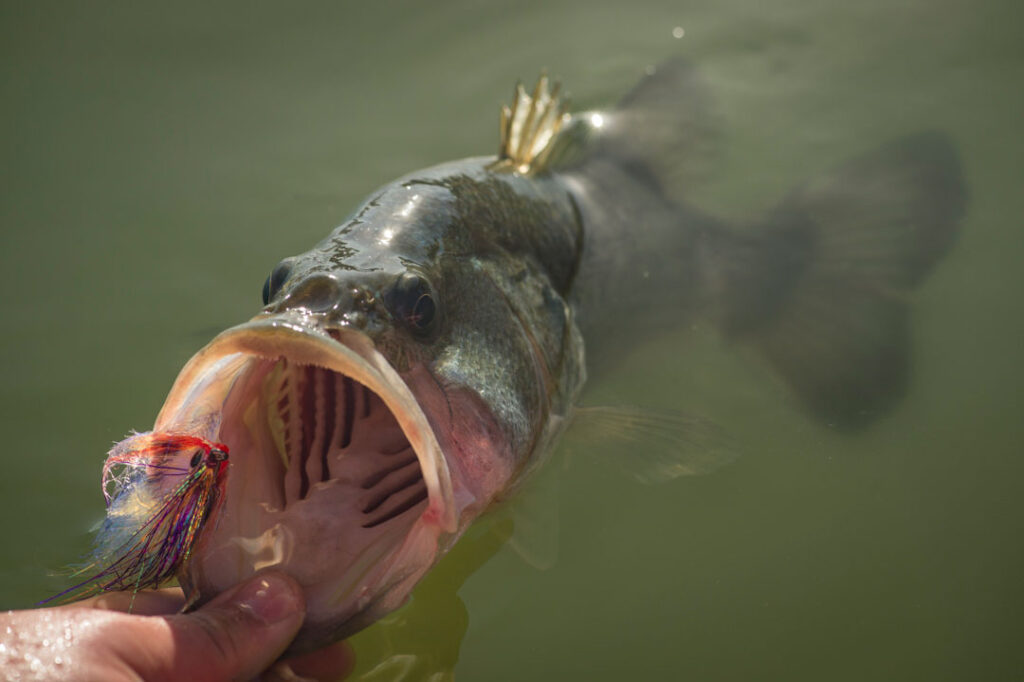
The fly-fishing world has always, for better or worse, spun around an axis of trout.
You all know the deal. Something like 75% of all fly rods, total, sold in the U.S. are 9-foot, 5-weights. The vast majority of product SKUs are trout-centric. Trout, trout, trout.
Don’t get me wrong… I love trout. I live for trout fishing. I’m the editor of TROUT magazine. But it’s becoming increasingly clear that climate change has altered the trout world as we know it, at least in many places.
Of course, you can stand under the tailwater, where the river temps remain constantly, trout-friendly cool. You can hike into the high country. Thank goodness. But a lot of the freestone rivers—and the tailwaters, once you get several miles downstream—are feeling it. The trout are absolutely feeling it.
Depending on who you talk with, “Hoot Owl” restrictions are akin to putting a Band-Aid on a compound fracture. You tell me how realistically effective it is to call quitting time at 1 or 2 p.m. Seriously?
Keep Fish Wet has just come out with a pretty eye-opening reality check on water temps and trout.
As someone who has written to encourage anglers to broaden the horizons, and target bass, and carp, and pike, and myriad other less temperature-sensitive species, I’ve seen the writing on the wall for years. I’d personally rather fish in salt water these days, but even there, we’re seeing changes.
And I still like to fly-fish for trout. Especially when they are on the epic summer hatches. I dream of heading north to Alaska, but I hear that even there, the runs of fish are not what they were.
Where do you stand? Is this much to do about nothing? Has the fly-fishing paradigm completely shifted as we know it? Can we manage the situation through education, good practices and cooperation? Or is it business as usual? Recreation as usual?
To AFFTA’s credit, they’ve called out the climate change issue and that’s where AFFTA’s focus belongs. But words demand action.
So how are you acting? I wouldn’t raise the issue were I not seriously concerned about what this sport looks like 15 years from now. And I think a lot of us (perhaps even myself) are just fiddling away as Rome has started to burn.
-K. Deeter




4 Comments
100% agreed: enough with the fixation on trout. There’s a whole other world out here, folks.
I grew up in Colorado and started fly fishing in single digits. To the eternal bewilderment of many friends, I voluntarily moved away in my 20s and eventually ended up on the Gulf Coast, in no small part thanks to a wicked saltwater addiction.
In many ways, I feel like I escaped from a cult.
Even down here I still see a shocking number of folks – admittedly, mostly older guys – who flatly refuse to fish locally, and instead save all of their fishing (and tying) for trout trips to Colorado and Montana. They’ve got redfish within an hour’s drive, and many of us have carp and bass quite literally our backyards….but they just won’t fish for them. They can’t shake the fixation on trout. It boggles my mind.
I’ve begun to think that it’s unhealthy for everybody, including the industry. It leads to bizarre stocking decisions, skewed market dynamics, overcrowded waters, repetitive books, and all the other issues that Kirk mentioned.
For the health of the industry, the community, the fisheries, and perhaps even our mental health, a mass exodus from the Church of Trout can’t start soon enough.
Making a blanket statement about quitting trout fishing in mid-summer is like never having a tuna salad sandwich again because a dolphin “might” have been killed in the process. Many freestone streams in the Northern Rockies are currently low and temperatures are soaring in recent days. By all means we should back off of them until conditions improve. However, there are multiple tailwaters, spring creeks and high mountain streams where conditions are still quite good with an abundance of cold, clean water for trout fishing..
Trout fishermen are a bit snobbish. I have no desire to fish for rough fish or “green” fish. I doubt that I’d fly fish at all were it not for trout and trout streams. That being said, we need to have a heightened sense of ethics about our fishing. I personally stopped my guides from fishing several area fisheries days before “hoot owl” regulations went into place in my area.
You do you.
Fly fishing is only for trout and all this alarmism is bad for the fish, the industry, and the anglers.
Very timely column. This week I received notice that a trout stream I fish (spring-fed, northern Ohio) was 65 degrees F, the highest anyone could remember. There were the usual warnings about fishing early and late in the day and to handle the fish with care, but I’m going to leave them alone until autumn.
I also remember predictions years ago from biologists and climate scientists that trout fishing in the Lower 48 would be gone by mid-century due to climate change — except for high mountains and tail waters near the dams. Sportsmen and sportswomen should b leading the charge against global warming. But I guess everyone has given up. (By the way, I love fly fishing for smallmouth in streams.)